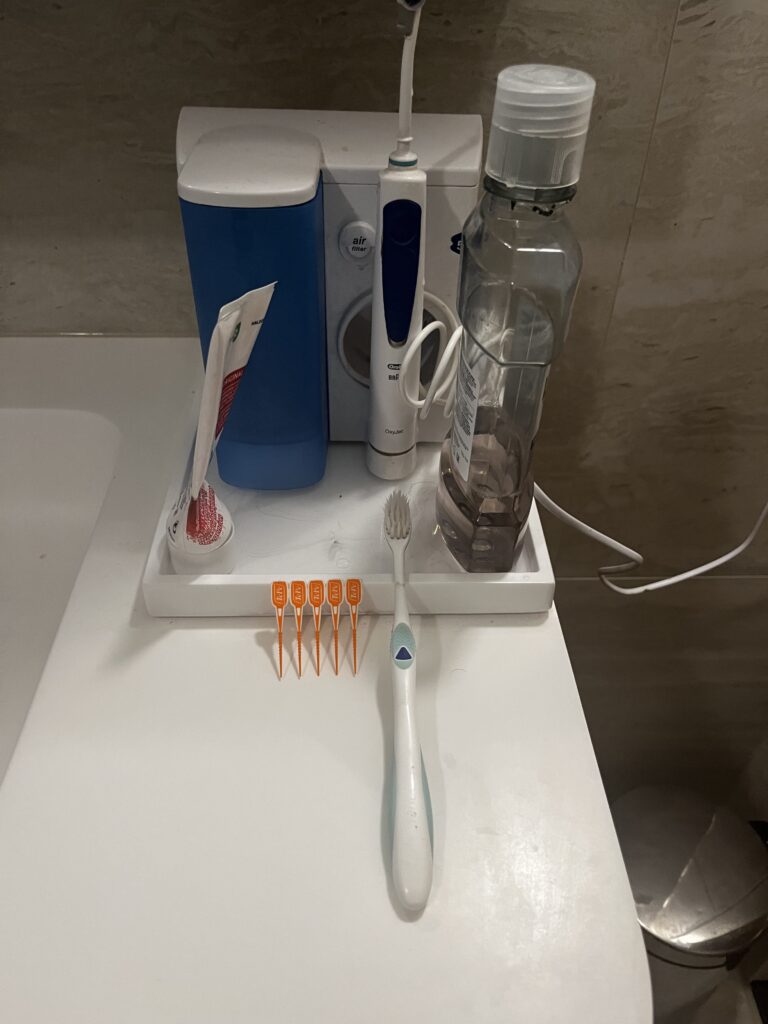
Summary: thanks to changing habits, by turning solid vegetables into soup, I now easily meet my daily vegetables target. And my body is grateful for it.
1. I don’t like vegetables...
I’ve never been a fan of vegetables. I would tolerate only peas and maybe some carrots. They had to be covered in Dutch Apple Sauce (which is not healthy because of its high sugar content). Potatoes and especially French fries got a pass. They might count as veggies, but peeled and fried, they do not offer much health benefit.
I have known all these years, of course, that vegetables should play a starring role in any healthy diet. My mother said a thing or two about it, if I remember correctly. But, willpower is essential for any lifestyle change and about these green, red and white things the motivation was just lacking. I will write about the importance of will power (and the lack of it) in another blog.
2. But
About six years ago, my wife decided she’d had enough of my veggie aversion. She started making vegetable soup, using fresh or frozen vegetables only. A blend of persuasion and gentle insistence managed to get me to eat it daily. It was a brilliant move and since then, I haven’t looked back. Vegetables are now an integral part of my diet, and the numbers from my annual health tests show the benefits. *(For context, biomarkers are biological molecules that indicate normal or abnormal processes or conditions in the body.)
3. At home we have a diet that is 3/4 liquid
1. Lemon juice to start the day and as a drink in between (1 liter). https://shakethehealthtree.com/index.php/2025/02/25/5-lemons-and-limes-health-project-99/
2. A large smoothie for breakfast and lunch (up to one liter). I already wrote about this morning routine. https://shakethehealthtree.com/index.php/2025/03/10/9-four-drinks-a-morning-afternoon-smoothie-health-project-99/
3. A fresh soup for the evening, with some carbs and proteins like fish, 0.4 liters.
4. Two glasses of water/lemon juice with collagen and creatine (0.5 liters), one in the morning with added protein, and one in the evening without extra protein.
4. Carbs, meat, fish
We aren’t against carbs. They just need to come in the form of whole grains. We prefer these over white bread, white rice, or light pasta. We don’t eat much meat, and when we do, it’s mainly organic chicken. We consume fish more frequently, though less than before due to a variety of increasing concerns ranging from mercury to nano-plastics. And I already wrote about the big role nuts play in my diet.
5. More about vegetables
I enjoy incorporating a variety of vegetables into my meals. I include red beets, broccoli, spinach, carrots, cauliflower, pumpkin, and sweet potatoes. I like to spice things up with a bit of celery or leek—I would use onions, but I’m unfortunately allergic. Instead of combining all these vegetables at once, I prefer selecting a mix that suits my needs. Not always a culinary success, by the way, but that is part of the process. Healthy they always are!
Each vegetable brings its own unique benefits. For example, beets are touted for their potential health properties, including (unproven) anti-cancer claims. Broccoli and spinach offer around 3 grams of protein per 100 grams. Sweet potatoes are particularly impressive, containing 35% fewer carbs than regular potatoes and packed with vitamins and minerals.
All these vegetables are excellent sources of fiber which is crucial for health. Good to know as it can be challenging to consume fiber in sufficient quantities, just as it is with protein. Life is unfair because if we compare proteins and fiber with sugar, there the opposite is true. Sugar, our common dietary foe is found in many forms in our food and very easy to overeat.
One caveat. Some vegetables have a surprising amount of sugar as well, so be careful. For example, carrots contain 6 grams per 100 grams, beetroot has 8 grams, and pumpkin 5. In contrast, broccoli contains only about 0.4 grams.
6. Preparation
I mostly use frozen vegetables for their health benefits, cleanliness, practicality, and affordability. When I buy fresh, I cook and freeze them for later use.
I start by boiling approximately ½ kg of frozen vegetables. After boiling for a few minutes, I transfer everything into a blender. I then add salt, pepper, two teaspoons of olive oil, and a generous amount of herbs. Once blended, voilà—a delicious vegetable soup is ready, although not always perfect! Too much cauliflower for example is not to my taste :).
Enjoy a happy, tasty and healthy life,
Robert, your health friend

Cool guys in the DRC, when times were more peaceful







